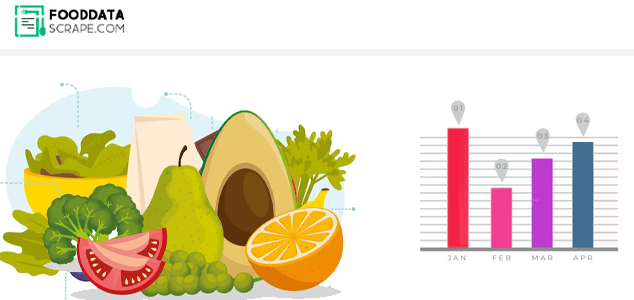The Client
The client, a leading data analytics enterprise specializing in retail and FMCG insights, sought to improve its intelligence capabilities within the quick-commerce segment. With a rapidly growing market dominated by online grocery platforms like Swiggy Instamart, the client required continuous visibility into category-wise pricing, stock availability, and delivery patterns. By adopting automated data extraction from Swiggy Instamart, the client gained access to live datasets that supported performance benchmarking, regional analysis, and consumer demand forecasting. This allowed them to optimize product assortment, enhance marketing efficiency, and deliver data-backed recommendations to their retail partners.
Key Challenges
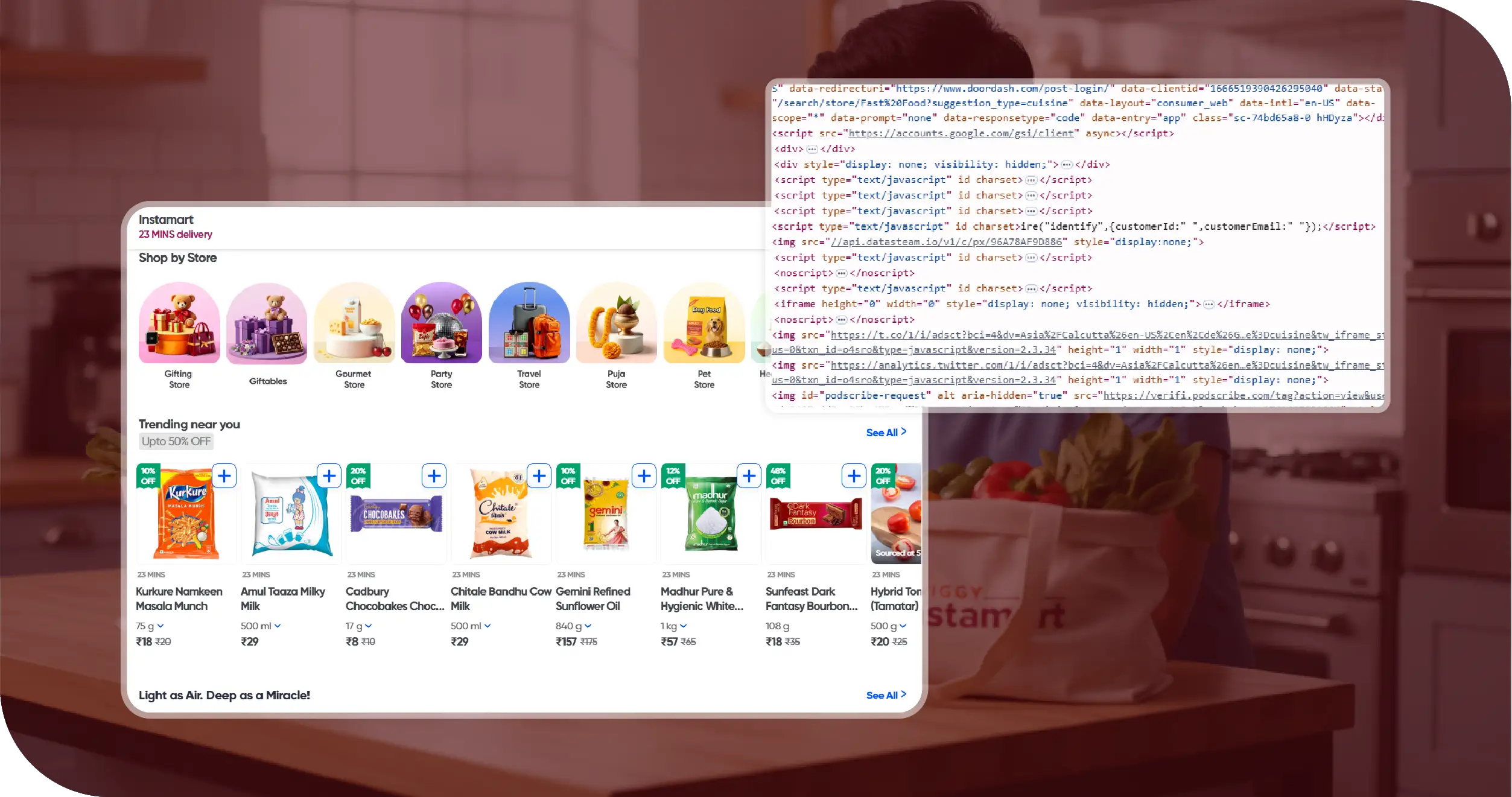
- Data Variability Across Regions: Swiggy Instamart operates in multiple cities with dynamic product assortments and price variations. The Swiggy Instamart Grocery Details Data Extraction API in India was used to normalize data across locations, ensuring consistency and comparability across product categories.
- Frequent Inventory Updates: Stock availability and pricing were highly volatile due to real-time order volumes and seasonal demands. Implementing the Swiggy Instamart Grocery Inventory Data Scraping API in India allowed continuous tracking of inventory fluctuations and stock-out scenarios for critical products.
- Manual Tracking Inefficiencies: Manually monitoring discounts and promotions across categories proved inefficient and prone to errors. The need to Extract Swiggy Instamart Grocery Product Details and Prices in India capability automated this process, ensuring timely updates for every SKU (Stock Keeping Unit) listed on the platform.
Key Solutions
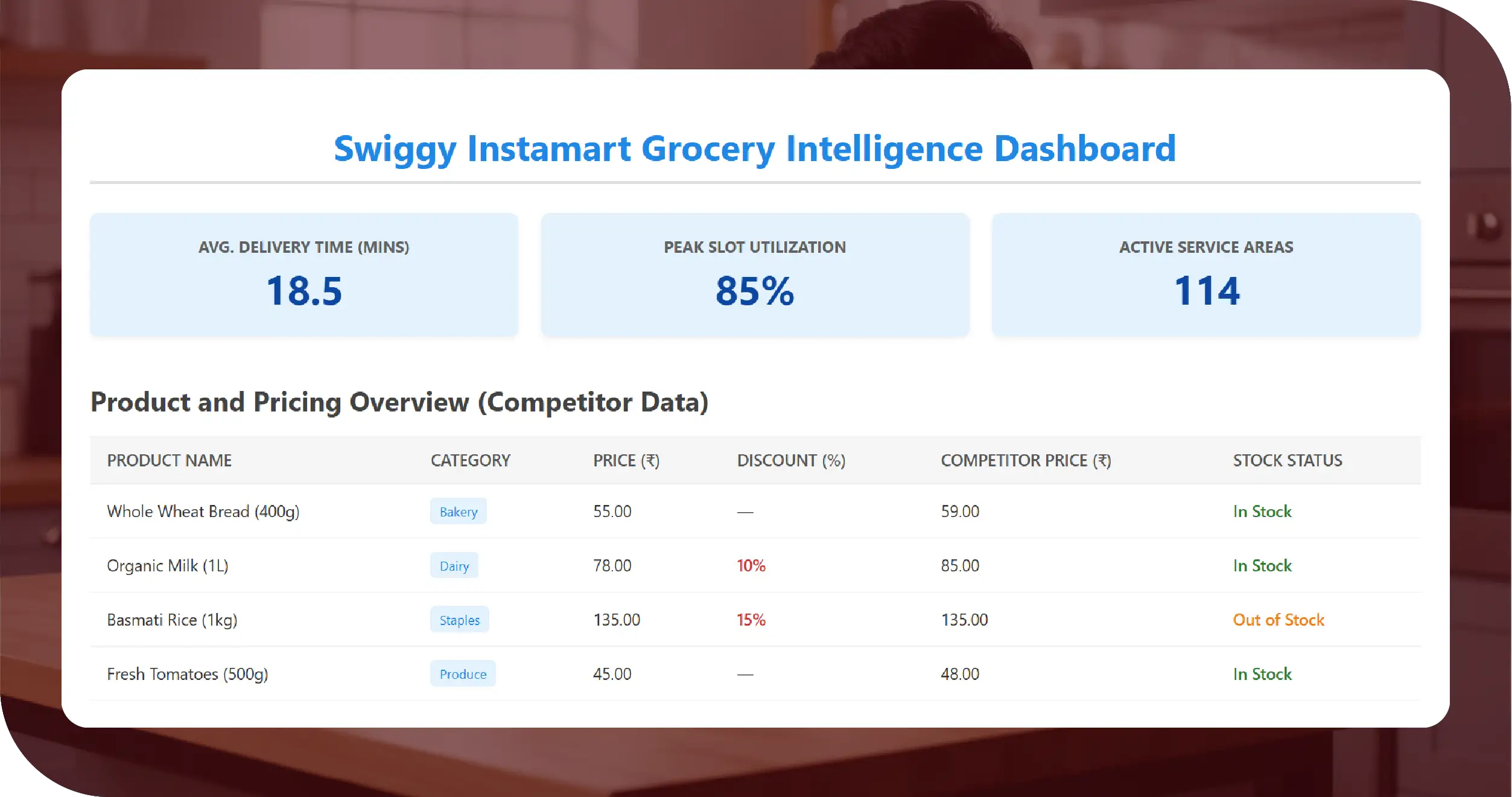
- Comprehensive Product Data Extraction: The automated solution was designed to Extract Swiggy Instamart Grocery Product Listings in India, covering product name, price, discount, stock status, and category. This enabled the creation of structured datasets for trend analysis and performance monitoring.
- Scalable Competitive Intelligence System: By implementing Swiggy Instamart Grocery Data Scraping, the client obtained detailed visibility into competitor pricing and product positioning, supporting the optimization of their own strategic offerings.
- Delivery and Performance Analysis: The project generated a Swiggy Instamart Grocery Delivery Dataset that captured delivery times, slot availability, and service coverage metrics. This helped the client evaluate Instamart’s logistical performance and identify patterns in delivery demand.
Table: Results Obtained from Swiggy Instamart Grocery Data API

Insights from the Data
- Pricing Stability: Dairy and instant food items exhibited relatively stable pricing across regions, suggesting high consumer demand consistency.
- Inventory Performance: Cooking oils and home essentials showed greater fluctuation in availability, influenced by seasonal buying patterns.
- Delivery Efficiency: Average delivery time ranged between 12–20 minutes, confirming Swiggy Instamart’s strong last-mile logistics efficiency.
Methodologies Used
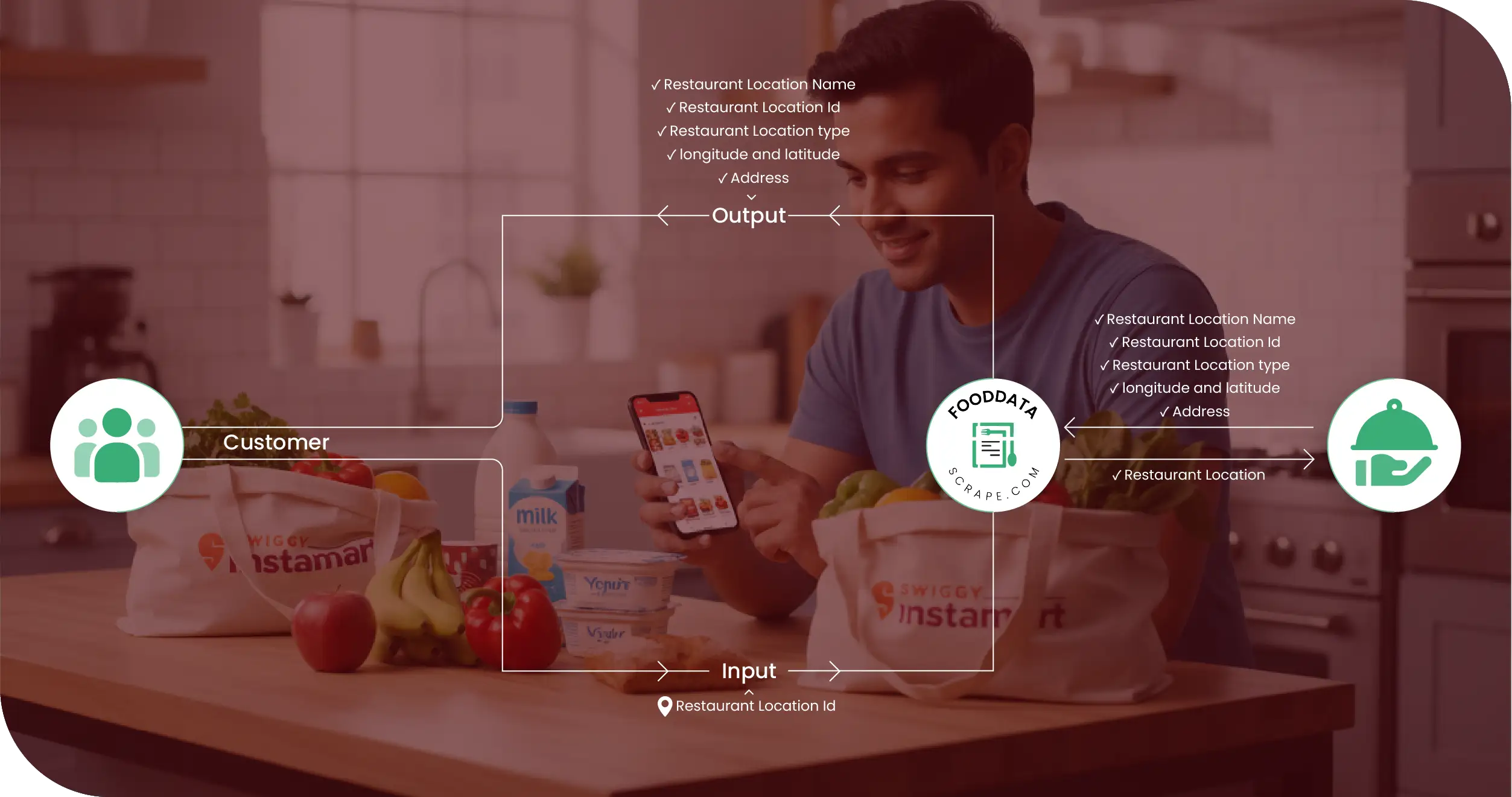
- Data Source Identification and Prioritization: Through Grocery App Data Scraping services, our team selected the most relevant data fields for extraction, ensuring all datasets contained actionable business metrics such as pricing, promotions, and delivery details.
- Automation Framework Implementation: The integration of Grocery Delivery Scraping API Services facilitated real-time and automated data collection. This eliminated manual dependencies and provided the client with continuously refreshed data feeds.
- Data Visualization and Tracking: A custom Grocery Price Tracking Dashboard was built to visualize fluctuations in pricing, product availability, and delivery patterns, enabling easy analysis of competitive trends.
- Validation and Cleaning Processes: Collected data was thoroughly validated to remove inconsistencies and outliers, strengthening Grocery Pricing Data Intelligence for accurate insights and forecasting.
- Consolidated Reporting and Integration: The extracted datasets were compiled into standardized Grocery Store Datasets, ensuring easy integration with the client’s existing analytics platforms for cross-market comparisons and trend forecasting.
Advantages of Collecting Data Using Food Data Scrape
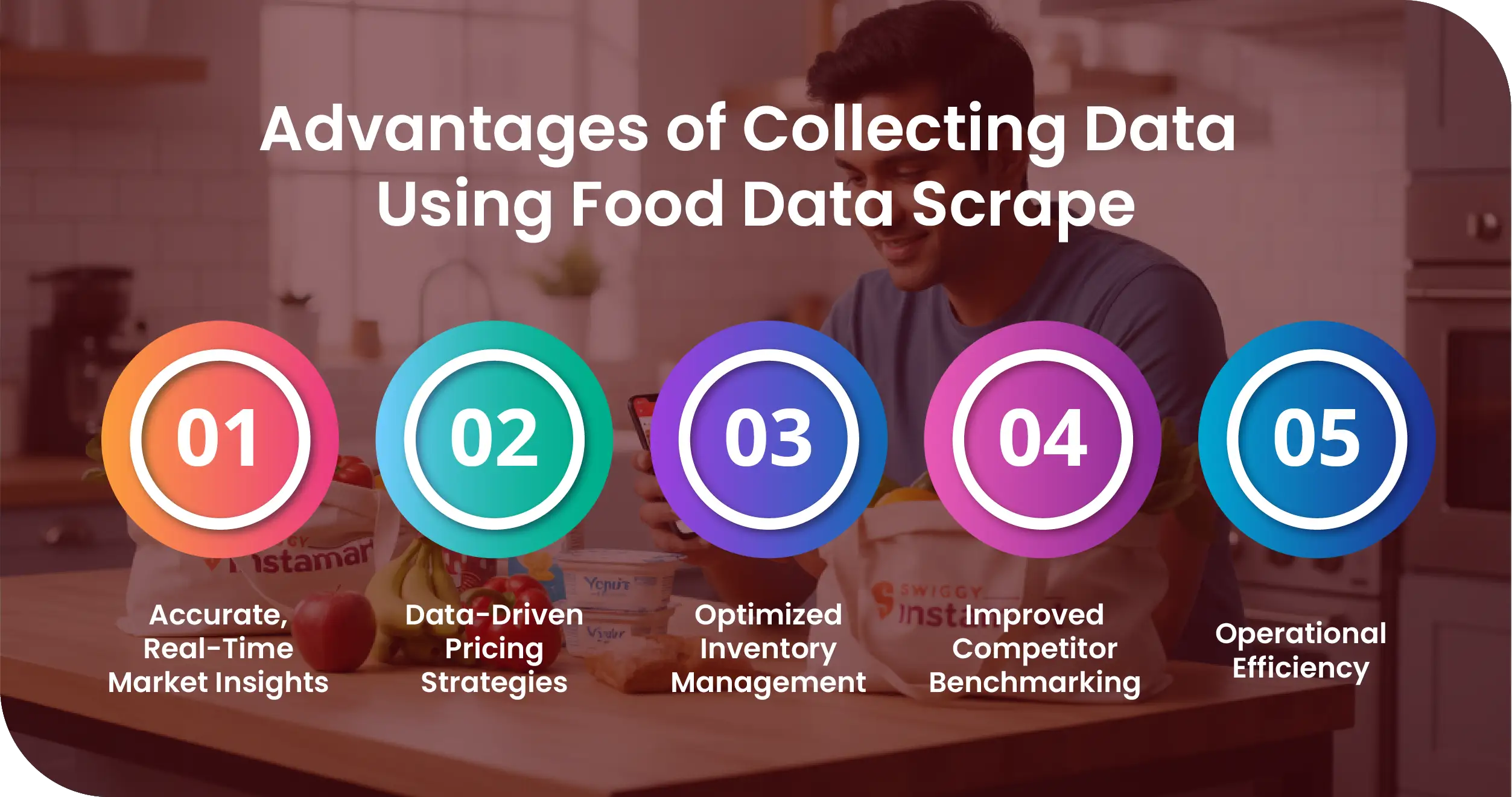
- Accurate, Real-Time Market Insights: Continuous data collection allowed the client to track changing consumer preferences, market trends, and competitor pricing without delay.
- Data-Driven Pricing Strategies: Access to structured, validated datasets enabled precise pricing models based on regional variations and promotional cycles.
- Optimized Inventory Management: The system provided visibility into product availability and stock movements, allowing efficient planning and restocking.
- Improved Competitor Benchmarking: The client could easily compare performance metrics across regions and product categories for competitive advantage.
- Operational Efficiency: Automated APIs eliminated manual scraping tasks, reducing human errors and enabling the analytics team to focus on insights rather than data collection.
Client Testimonial
"Our partnership with this team completely transformed our data analytics capability. The customized Swiggy Instamart scraping APIs delivered real-time and precise insights into product pricing, availability, and delivery patterns. Their technology provided us with a clear competitive edge in market tracking and decision-making. The automation reduced manual workload significantly while improving data accuracy and processing speed. Their support continues to be vital for our business growth and market intelligence strategy."
Vice President
Final Outcome
The project empowered the client with an automated and scalable framework for market intelligence. The APIs captured real-time product and pricing data from Swiggy Instamart’s platform, producing highly accurate and structured grocery datasets. Using the insights obtained, the client improved pricing optimization, enhanced stock forecasting, and refined promotional timing strategies. The integration of APIs, dashboards, and advanced validation techniques provided the client with reliable insights for faster business decisions. This data-driven ecosystem enabled the client to respond dynamically to market shifts, strengthen retail partnerships, and maintain a competitive edge in India’s rapidly evolving quick-commerce landscape.
























































































